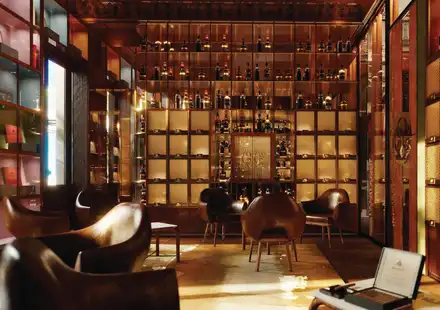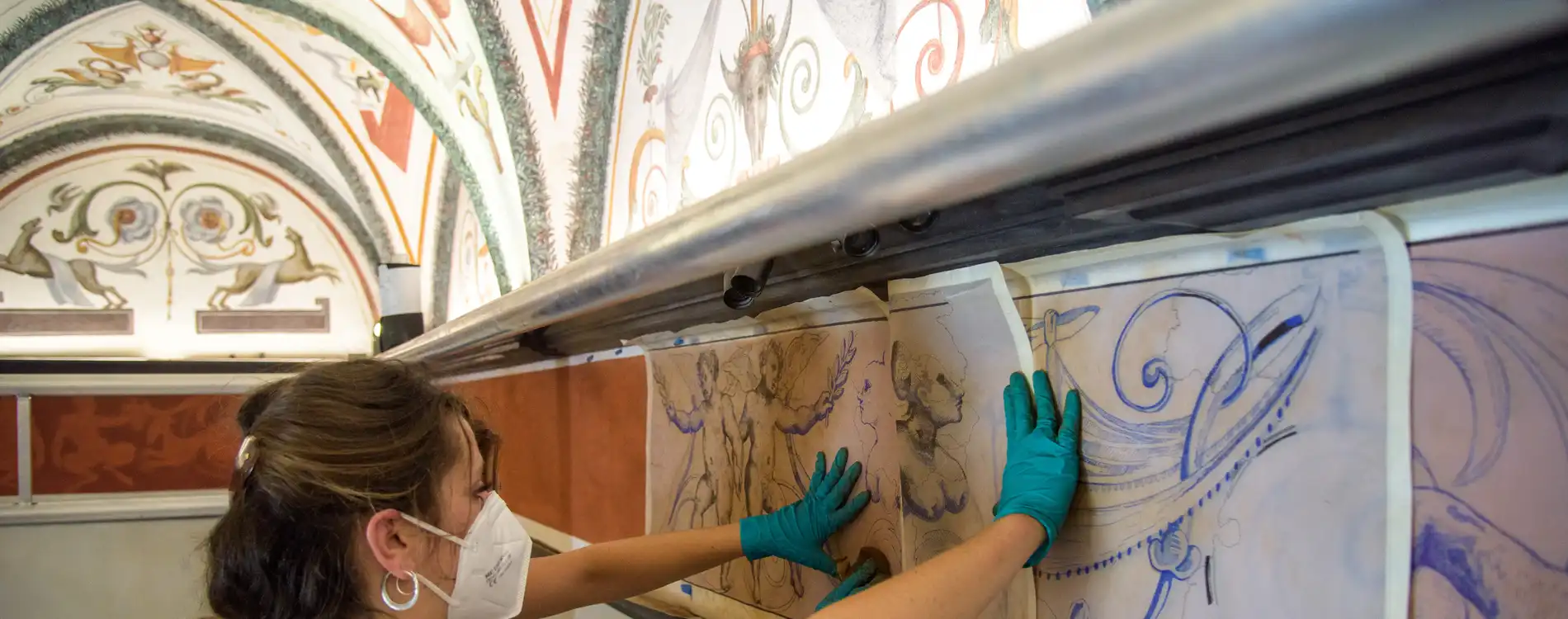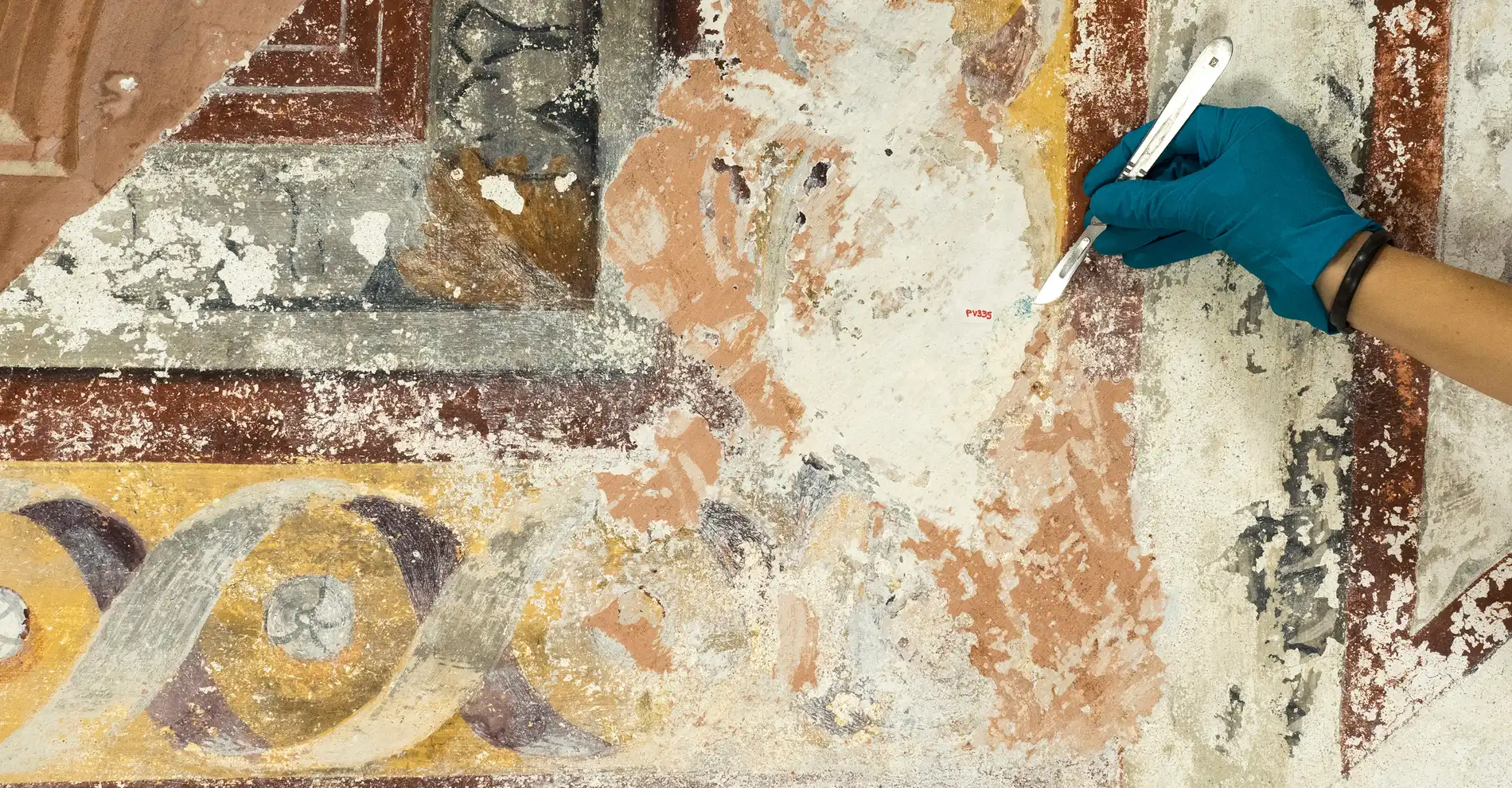Published on December 02, 2022Updated on April 25, 2023
Renaissance frescoes covering 600sqm have been discovered in the Prince’s Palace, hidden under paintings from the 19th century.
Discover through this article, a treasure of the Renaissance that you will be able to contemplate at the Prince's Palace of Monaco from April 1st to October 15th 2023.
A Renaissance Treasure
"When they were first discovered, we cried. Beauty is very moving. We felt like Indiana Jones!" says Christian Gautier, director of the conservation and restoration of the frescoes. The surprise came during the restoration of the facades of the Cour d’Honneur of the palace, begun in 2013. The painters, perched on their scaffolding, examined the lunettes and vaults of the Galerie d’Hercule. They suspected that an older decoration was buried under the layers of 19th-century paintings. Their intuition was correct. When they scraped the surface with their scalpels, mythological motifs in strong, pure colours began to appear. Analyses proved that the frescoes, which depicted the labours of Hercules, his birth and death, dated to the Italian Renaissance.

Discovery of exceptional frescoes
This initial discovery was not an isolated case. In 2016, as an electrician chiselled a groove in a corner of the ceiling of what was then called the Salon Matignon, a fragment of plaster came away. Surveys were then carried out on the area and the team found a medallion in the centre of the ceiling representing Europa being kidnapped by Jupiter in the guise of a bull. It took four years to restore the ceiling and frieze, painted in fresco, and to discover a world of “grotesques” (figures who are half-human, half-animal). The investigations continued in the Throne Room, where in 2020 a series covering 220sqm was found under successive layers of paint. And it is quite possible that there will be more discoveries.

The author of the frescoes remains a mystery
Who made these original frescoes? “It’s a great mystery,” says Christian Gautier, who thinks they are “strongly influenced by the workshops of Raphael and Michelangelo.” Research continues and the Prince’s Palace archives have found a receipt from 1547 attesting to a payment by the lord of Monaco to the Genoese painter Nicolosio Granello, a disciple of Raphael. This restoration project is exceptional in several respects. “These 10 years of work represent the project of a lifetime. So far it has brought together 60 researchers, art historians and restorers. Around 20 people have been working on the site at all times.”

The protocol drawn up by a committee of experts recommended the use of eco-responsible techniques: “We have banned toxic petrochemical products traditionally used for restoration work, and used substitutes such as gum Arabic or synthetic pigments to replace pigments whose environmental impact is catastrophic. We created a new watercolour and a palette of 14 colours similar to the ones used by the 16th-century painters; the colours were treated in the laboratory to give the impression of real aging.” Another innovation was required in the Galerie d’Hercule: since it is an official reception room for heads of state and public figures, the team had to develop removable panels to hide the blank ones and restore the missing parts. “We borrowed a technology used by the aeronautics industry to manufacture aircraft wings,” says Christian Gautier. “This structure is a laboratory, a model 21st-century building site.”
You might also like…
Monte-Carlo Cigar Club
Dominique London, a leading light in the luxury cigar world, is teaming up with Monte-Carlo Société des Bains de Mer
to open the Monte-Carlo Cigar Club in 2025. This exclusive new venue promises to be an icon in the making.

Monaco Basket Association
Monte-Carlo Société des Bains supports the players in the women’s MBA, helping them to move up
the divisions of women’s basketball and represent Monaco on the international stage.

Tales of villas in Monaco
We take a look at some of Monaco's most beautiful villas and the stories they tell about the Principality's history.


